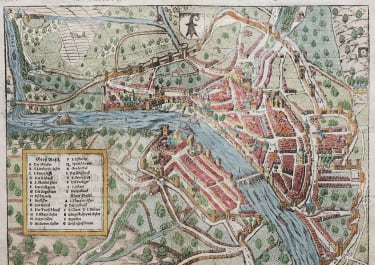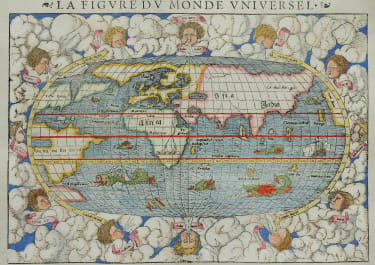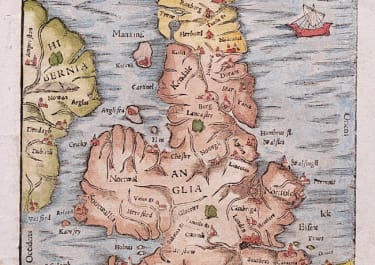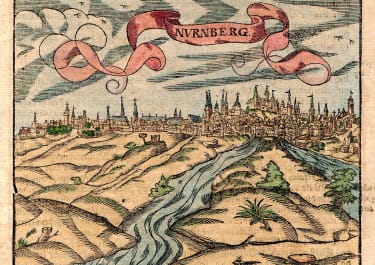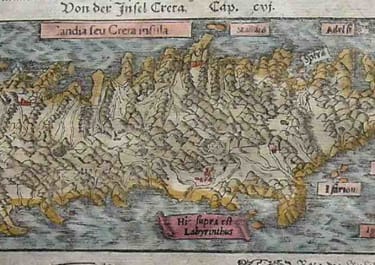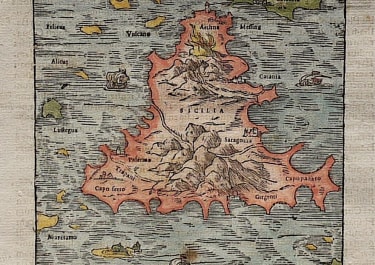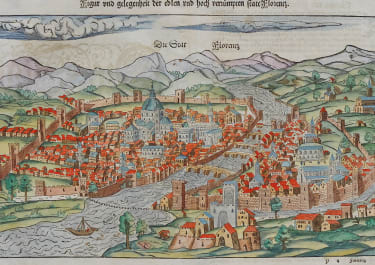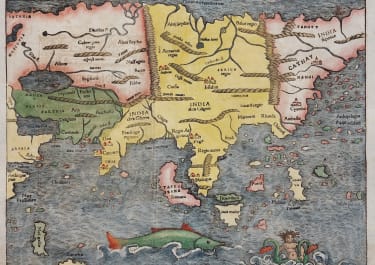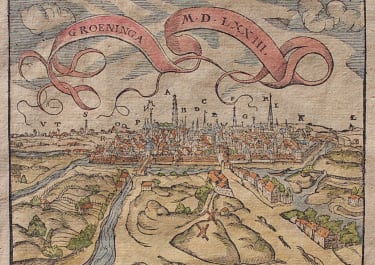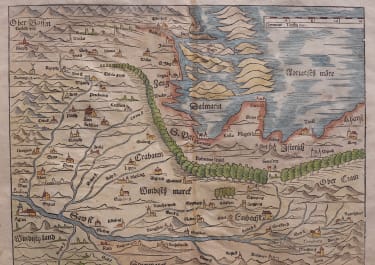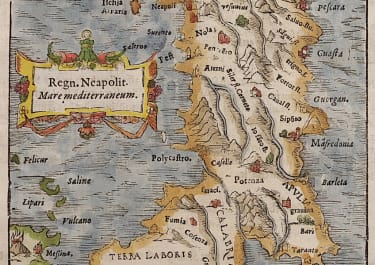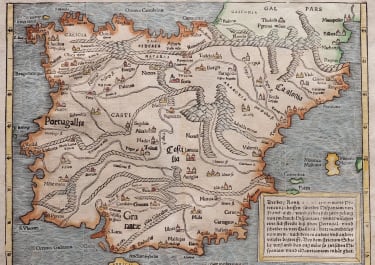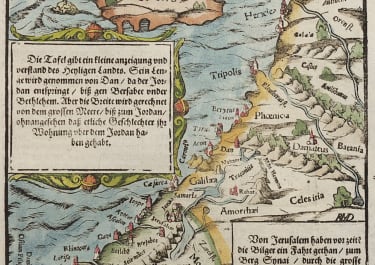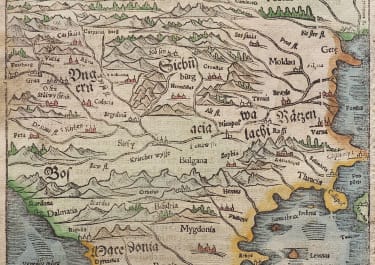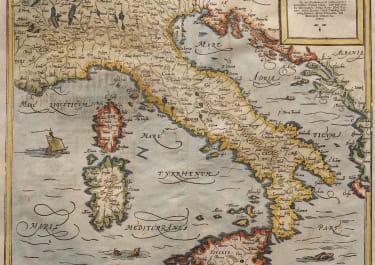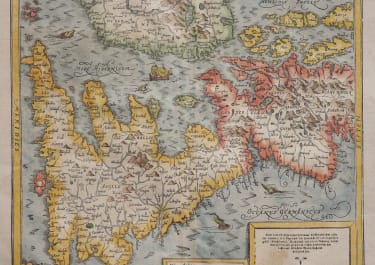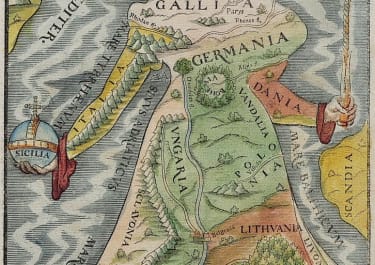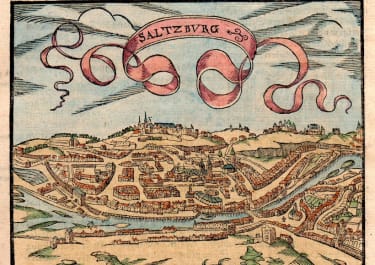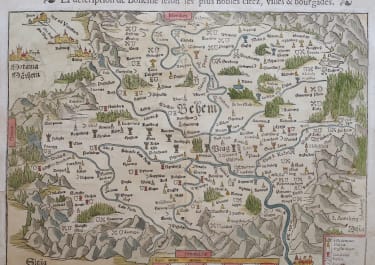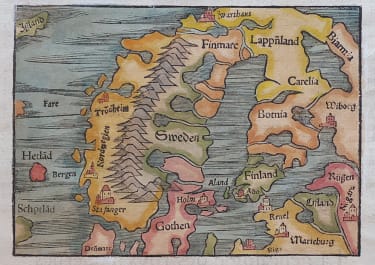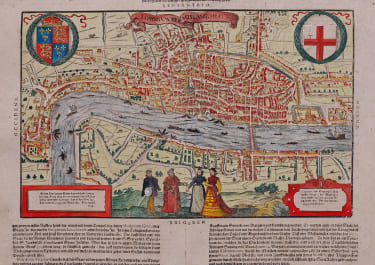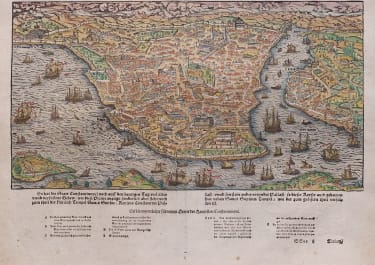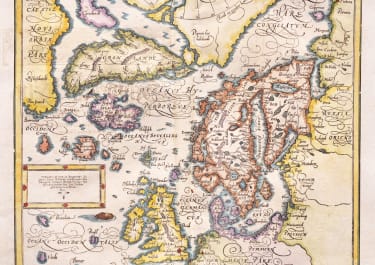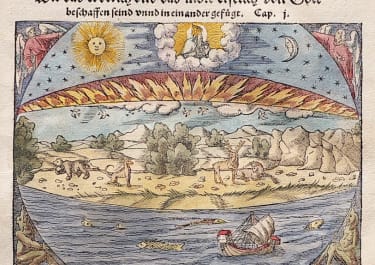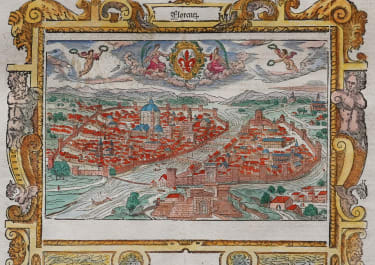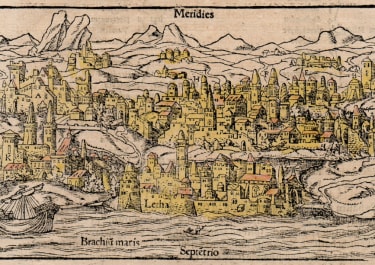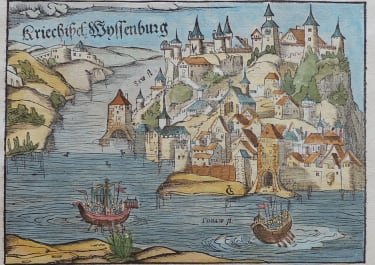ANNO DOMINI 1548 VIENA AUSTRIAE HUNC HABUIT SITUM
£495
One of the most stunning large Sixteeenth century woodcut panoramas In this case a plan of Vienna from Sebastian Munster's "Cosmographia ...".
These panoramas are near impossible to find as the they were 2 sheets meant to be joined and usually one sheet was missing
Wolfgang Lazius, physician, historian and cartographer, supplied this view of his home city as viewed from the north. The date" 1548" and initials "HRMD" appearing at the lower centre and "HH" to the right identify the woodcutters as Hans Rudolph Manuel Deutsch and Heinrich Holzmuller. It seems likely that one probably executed the topography, the other the lettering and scrollwork, prominently displayed in the banner extending the full length of the image.
Excellent hand comour and and in excellent condition
A real collectors item.
code : M3519
Cartographer : Sebastian Munster
Date : 1550 Basel
Size : 24*78 cms
availability : Available
Price : £495
Originally a scholar studying Hebrew, Greek and mathematics, Sebastian Munster (1489-1552) eventually specialised in mathematical geography and cartography. It was this double ability - as a classicist and mathematician - that was to prove invaluable when Munster set himself to preparing new editions of Solinus’ “Memorabilia” and Mela’s “De Situ Orbis”, two classical descriptive geographies containing maps, and his own two greatest works, the “Geographia” and “Cosmographia”. These reflect the widespread interest in classical texts, which were being rediscovered in the fifteenth century, and being disseminated in the later fifteenth and sixteenth century, through the new medium of printing.
The “Geographia” was a translation of Ptolemy’s landmark geographical text, compiled in about 150 AD., illustrated with maps based on Ptolemy’s calculations, but also, in recognition of the increased geographical awareness, contains a section of modern maps. In the first edition of the “Geographia”, Munster included 27 ancient Ptolemaic maps and 21 modern maps, printed from woodblocks. Subsequent editions of the “Cosmographia” were to contain a vast number of maps and plans.
One consequence of Munster’s work was the impetus it gave to regional mapping of Germany, but Munster was also the first cartographer to produce a set of maps of the four continents on separate maps. Most importantly, through his books (the “Geographia” and “Cosmographia” alone ran to over forty editions in six languages), Munster was responsible for diffusing the most up-to-date geographical information throughout Europe.





